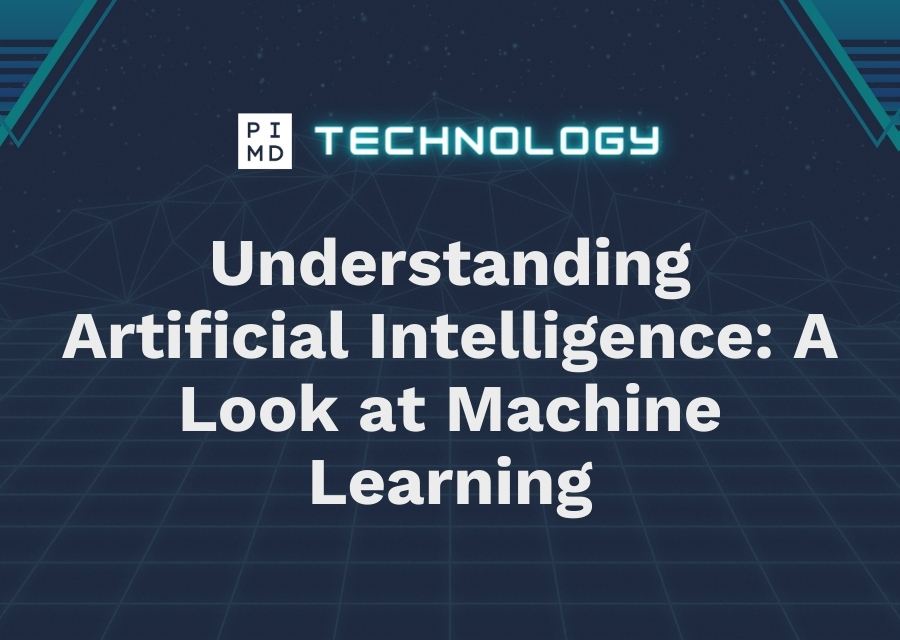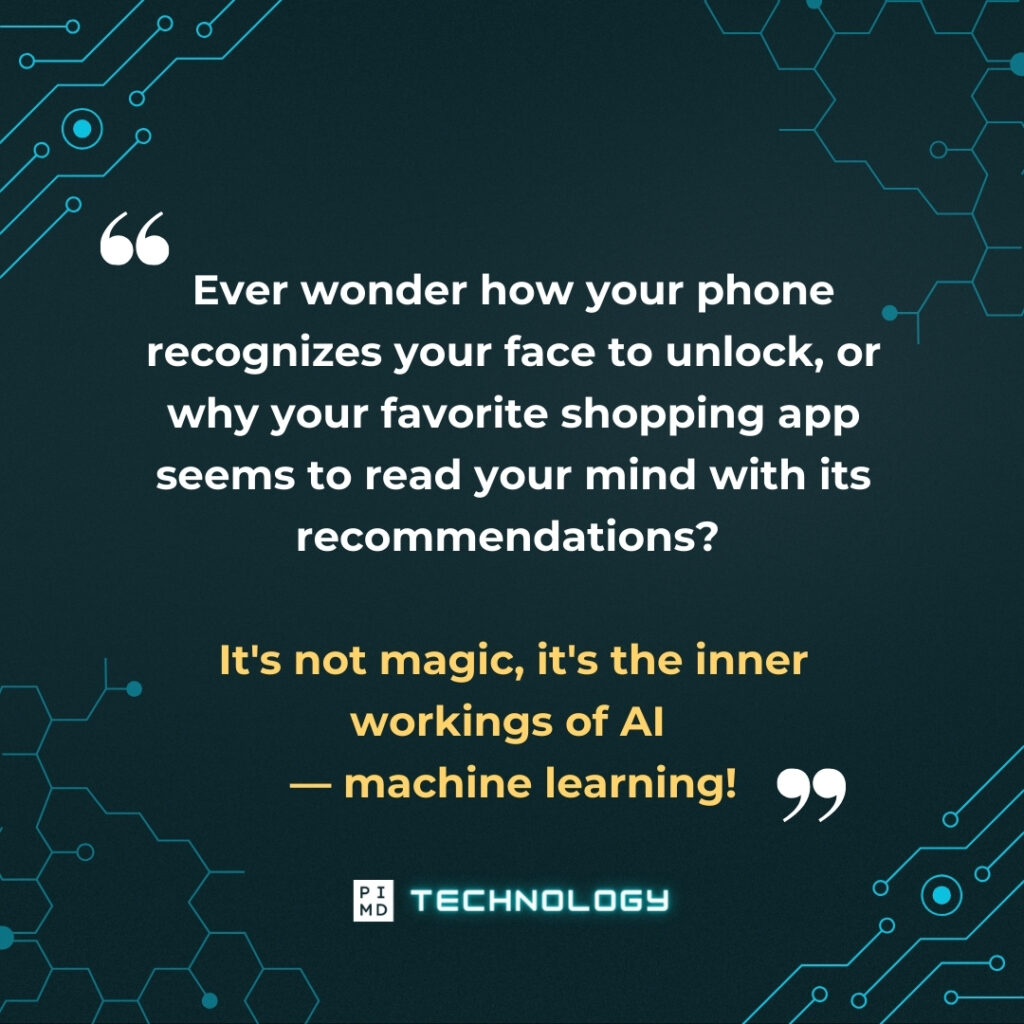
Understanding Artificial Intelligence: A Look at Machine Learning
This post may contain links from our sponsors. We provide you with accurate, reliable information. Learn more about how we make money and select our advertising partners.
Ever wonder how your phone recognizes your face to unlock, or why your favorite shopping app seems to read your mind with its recommendations? It's not magic, it's the inner workings of AI — machine learning!
Simply put, it's how computers learn on their own by crunching massive amounts of data.
Imagine a computer that gets better at a task the more it practices, the more information and feedback you feed it, that's the secret sauce behind self-driving cars navigating city streets and chatbots holding conversations that feel almost human.
And guess what? Machine learning is exploding with the advent of AI, creating a huge wave of amazing stuff we've never seen before. Need a hyper-realistic image of a dog? Got it. How about making it talk like a human? Possible!
It's crazy and yes it is the future with a lot more waiting in store. How does it work? Let's dive deeper into it and unlock how it can potentially help with your business, day-to-day, or any other goal!
Table of Contents
Supervised Learning: Learning from Examples
One of the core techniques in machine learning is supervised learning. Imagine a student learning from a teacher. In supervised learning, the algorithm acts as the student, and the data serves as the teacher.
Here's how it works in terms of inputs and outputs, ‘inputs' meaning what you feed the computer and ‘output' as what it gives in return:
Labeled Data
The key ingredient for supervised learning is labeled data. This data consists of input features and desired output values. For instance, in an image recognition system, the input might be a pixelated image, and the desired output could be a label like “cat” or “dog.”
To put it into real-life perspective, here are a few more examples.
- Self-Driving Cars: Imagine a car equipped with cameras capturing real-time video footage (input). This footage is then labeled with data points indicating the location of pedestrians (red boxes), traffic lights (green circles), and other objects (labeled accordingly). This labeled data is fed into the machine learning algorithm during training.
- Medical Diagnosis: Medical scans like X-rays or mammograms (input) are paired with labels indicating the presence or absence of a specific disease (output). This labeled data allows the algorithm to learn to identify patterns in scans that might be indicative of a particular condition.
- Spam Filtering: Millions of emails (input) are manually classified as spam or not spam (output) by human reviewers. This labeled data is used to train algorithms to automatically filter out unwanted emails in the future.
Training Process
The algorithm is exposed to a large dataset of labeled examples. It analyzes the relationship between the input features and the corresponding outputs. Through a series of calculations and adjustments, the algorithm learns to map the inputs to the desired outputs.
Best examples of this are:
- Movie Recommendation Systems: Imagine a streaming service that tracks what movies you watch and how much you rate them (input). Netflix, Hulu, you name it. This data is used to train the algorithm to identify patterns in your preferences. Over time, the algorithm learns to recommend movies that are similar to the ones you've enjoyed in the past (output).
- Stock Market Prediction: Financial data like historical stock prices, trading volumes, and economic indicators (input) are fed into the algorithm. By analyzing this data, the algorithm learns to identify trends and patterns that might be predictive of future stock prices (output). It's important to note that this is not an exact science, but supervised learning can help identify potential investment opportunities.
- Fraud Detection: Banks analyze vast amounts of transaction data (input), including purchase amounts, locations, and spending habits. This data is labeled as fraudulent or legitimate (output) to train algorithms to identify suspicious transactions in real-time, potentially preventing financial losses.
Common Algorithms
Supervised learning encompasses a variety of algorithms, each with its strengths. Regression algorithms excel at predicting continuous values, like stock prices or weather forecasts. Classification algorithms, on the other hand, are masters of categorization, making them ideal for tasks like spam detection or image recognition.
Here's how it's being used:
- Regression: Weather forecasting services use regression algorithms to analyze historical weather data (temperature, humidity, wind speed etc.) (input) to predict future weather conditions (output).
- Classification: Social media platforms use classification algorithms to analyze uploaded images (input) and automatically identify and tag objects or people within them (output). This allows for features like automatic photo tagging or content moderation.

Interested in AI tools for personal or business use? SUBSCRIBE AND TUNE IN TO OUR PODCAST:
#169 Physician’s Tools of the Future: Harnessing the Power of AI, ft. Dr. Peter Kim
Unsupervised Learning: Finding Hidden Patterns
Unlike supervised learning, where the data holds all the answers, unsupervised learning deals with unlabeled data. Here, the algorithm is tasked with uncovering hidden patterns and structures within the data itself.
Imagine being presented with a box of unlabeled toys. Unsupervised learning algorithms are like curious children trying to make sense of the contents. They might group similar toys together (clustering) or identify underlying shapes and colors (dimensionality reduction).
Clustering
This technique is particularly useful for customer segmentation. By analyzing customer data like purchase history and demographics, unsupervised learning algorithms can group customers with similar characteristics, enabling businesses to tailor targeted marketing campaigns.
Anomaly detection in network security is another application where clustering helps identify unusual patterns that might indicate a cyberattack.
Other examples:
- Customer Segmentation: Imagine an online retailer with data on customer purchases (clothing categories, price points, etc.) and demographics (age, location, income). Unsupervised learning algorithms can cluster these customers based on their buying habits. This allows the retailer to identify distinct customer segments, like young budget-conscious shoppers or brand-loyal professionals. With this knowledge, they can tailor marketing campaigns and product recommendations to each segment for maximum impact.
- Genealogy Research: Geneticists use unsupervised learning algorithms to analyze vast amounts of genetic data (input). These algorithms can cluster individuals with similar genetic markers, potentially revealing ancestral connections or genetic predispositions to certain diseases.
Dimensionality Reduction
When dealing with massive datasets with numerous features, unsupervised learning algorithms can simplify the data by identifying the most important dimensions. This not only improves processing efficiency but also helps visualize complex data sets for better analysis.
Image compression, which reduces file size while maintaining image quality, relies heavily on dimensionality reduction techniques.
A few more of its applications:
- Medical Imaging Analysis: Doctors use complex medical scans like MRIs (input) to diagnose diseases. Unsupervised learning algorithms can reduce the dimensionality of these images by highlighting the most relevant features, such as suspicious growths or abnormalities. This allows doctors to focus their analysis on the most critical information within the scan.
- Astronomy: Astronomers collect massive datasets from telescopes, capturing information on celestial objects (input). Unsupervised learning algorithms can be used to identify patterns and clusters within this data, potentially revealing new classes of stars, galaxies, or other celestial bodies.
Unsupervised learning plays a crucial role in scientific research, where it helps identify new patterns and relationships within vast datasets. Marketing teams leverage unsupervised learning to understand customer behavior and preferences, leading to more effective marketing strategies.
Reinforcement Learning: Learning Through Trial and Error
Reinforcement learning takes a different approach to learning. Here, the algorithm interacts with an environment, receives feedback in the form of rewards or penalties, and learns to make optimal decisions based on those experiences.
Think of a child learning to ride a bike. They experiment, fall down (penalty), adjust their approach (learning), and eventually master the skill (reward). Reinforcement learning algorithms operate on a similar principle, making them particularly valuable for complex, real-world scenarios where the rules are constantly evolving.
Reward System
The key driver in reinforcement learning is a well-defined reward system. By providing positive reinforcement for desired actions and penalties for undesirable ones, the algorithm learns to navigate the environment and maximize its success.
Here's how it is used in the field:
- Training an AI Assistant: An AI assistant is being trained to understand and respond to user queries effectively (environment). The assistant receives a positive reward (increased score) for providing accurate and helpful responses, while receiving a penalty (decreased score) for misunderstandings or irrelevant answers. This feedback loop helps the assistant learn to navigate natural language and improve its communication skills.
Unique Capabilities
Reinforcement learning is particularly adept at handling complex decision-making scenarios where the environment is dynamic and the rules are not explicitly defined.
This makes it a valuable tool for tasks like:
- Industrial Robot Optimization: A robotic arm in a factory needs to learn to assemble a complex product efficiently (environment). The reinforcement learning algorithm receives a reward for successfully completing the assembly within a set time frame and with minimal errors. Over time, the algorithm learns the most efficient movements and handling techniques for the task, even if the exact steps haven't been explicitly programmed.
- Playing a Video Game: An AI agent is tasked with mastering a complex video game like StarCraft 2 (environment). The agent receives a reward for achieving in-game objectives like building structures, managing resources, and defeating enemies. Through millions of trial-and-error interactions with the game environment, the agent learns optimal strategies and tactics to win the game. This showcases the ability of reinforcement learning to handle dynamic environments and make complex decisions without pre-defined rules.

Confidently Invest in Passive Real
Estate Deals in Just Four Weeks!
Everyone knows that investing in real estate can be intimidating, but it doesn’t have to take years to learn. Passive Real Estate Academy (PREA) is your opportunity to join a community of like-minded investors who will show you how to leverage other people’s time, capital, and experience to create your ideal life.
Our course in passive income for physicians meets you where you are. Whether you’re entirely new on your journey to financial freedom or are already building your passive income streams, you’ll find value in our course that expedites the process of becoming an expert.
Join a community of doctors who support each other on the journey to creating passive income!
Conclusion: The Future of Machine Learning Techniques
As we delve deeper into the world of machine learning, a thrilling truth emerges: this is not just about the capabilities of machines, but about the potential of what we can achieve together.
And it is still constantly evolving, with exciting stuff some of us might be familiar with.
Here are a few more techniques that we will see more in the future:
- Deep Learning: Deep learning leverages powerful artificial neural networks with multiple layers, mimicking the structure and function of the human brain. These complex architectures excel at tasks that were once considered too challenging for machines, such as image and speech recognition. Deep learning is a major driver of advancements in facial recognition software, natural language processing for chatbots and virtual assistants, and even the development of self-driving cars.
- Explainable AI (XAI): As machine learning models become more sophisticated, ensuring their transparency and interpretability becomes crucial. Explainable AI (XAI) techniques aim to shed light on the decision-making processes within these models. By understanding how models arrive at their outputs, we can build trust in their applications, identify potential biases, and ensure responsible development.
- Federated Learning: Data privacy is a growing concern in the age of big data. Federated learning offers a promising solution, enabling collaborative learning across multiple devices without compromising user privacy. In federated learning, algorithms train on local datasets on individual devices, and only the model updates, not the raw data itself, are shared for central aggregation. This allows for distributed learning while safeguarding sensitive information.
The journey ahead is brimming with possibilities. Imagine healthcare systems that not only diagnose but predict illnesses, or personalized learning experiences that adapt to each student's unique needs. Envision self-driving cars navigating any terrain with ease, or robots collaborating seamlessly with humans in complex tasks.
This is the future that machine learning promises, and it's just the beginning. As these techniques evolve, the boundaries between human and machine intelligence will continue to blur, moving everyone to an era of unprecedented growth and innovation.
The question isn't what machines can learn, but what we can achieve together. How do we do that?
First is to stay ahead of the curve by subscribing to our newsletter! We'll keep you informed about the latest AI breakthroughs, investments, and more cool stuff.
What do you think? Is AI machine learning something that excites you? Let us know in the comments!
IF YOU WANT MORE CONTENT LIKE THIS, MAKE SURE YOU SUBSCRIBE TO OUR NEWSLETTER TO GET UPDATES ON THE LATEST TRENDS FOR AI, TECH, AND SO MUCH MORE.
Peter Kim, MD is the founder of Passive Income MD, the creator of Passive Real Estate Academy, and offers weekly education through his Monday podcast, the Passive Income MD Podcast. Join our community at the Passive Income Doc Facebook Group.
Further Reading
Disclaimer: The topic presented in this article is provided as general information and for educational purposes. It is not a substitute for professional advice. Accordingly, before taking action, consult with your team of professionals.

